To run your computer system you need computer memory. If you use a computer you must know what are computer memory and its types. In this blog post, we will briefly explain computer memory and also describe all types of memory used to run computer systems. So let’s start now with the definition of memory:
What is memory?

The part through which data, images, video, audio, etc can be permanently stored is called memory in computer language. It is like the memory of the human mind. It is used to supply data and ways. A memory card or memory cartridge is an electronic storage device used to store digital data.
It is commonly used in portable electronic devices such as digital cameras, mobile phones, laptops, computers, tablets, portable media players, video game consoles, PDAs, electronic keyboards, synthesizers, and digital pianos.
It is basically also called conserved nanotechnology. Then there is the new addition of various information or data storage that is used by any type of device, big or small, from computers.
What is computer memory?
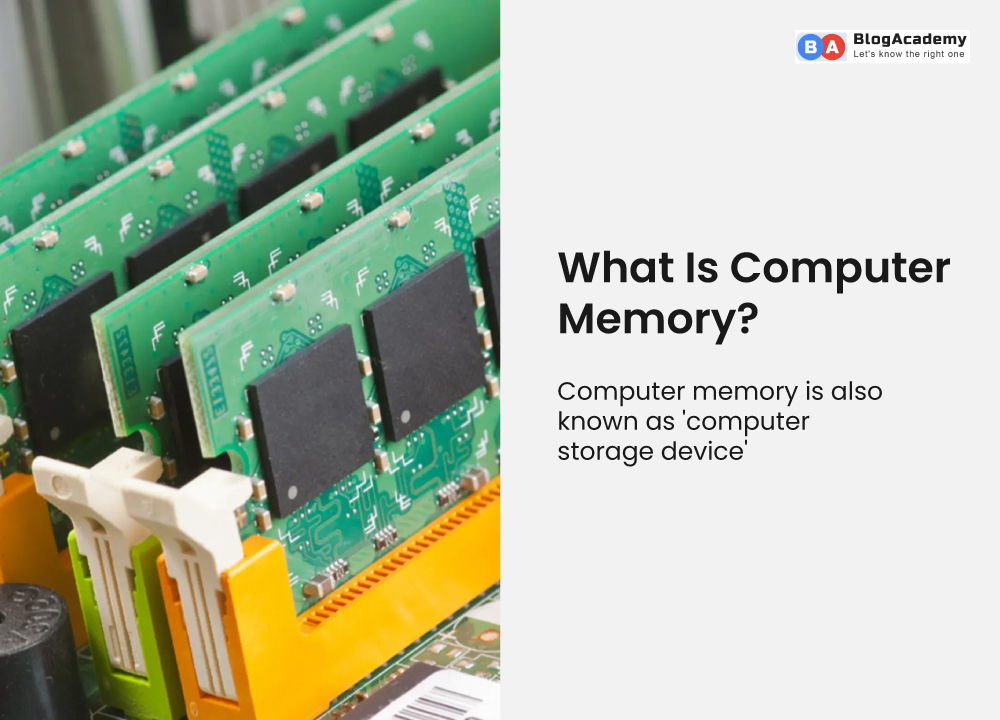
Computer memory is also known as a ‘computer storage device’ which helps to store important data like any information, songs, movies, pictures, software, etc. All these data are stored in two different modes.
One is temporary and the other is permanent in nature. All data is stored in digital form in computer memory. Users can retrieve the saved data anytime they need.
What are the types of computer memory?
There are three types of computer memory:
- Primary
- Secondary
- cache
Primary memory
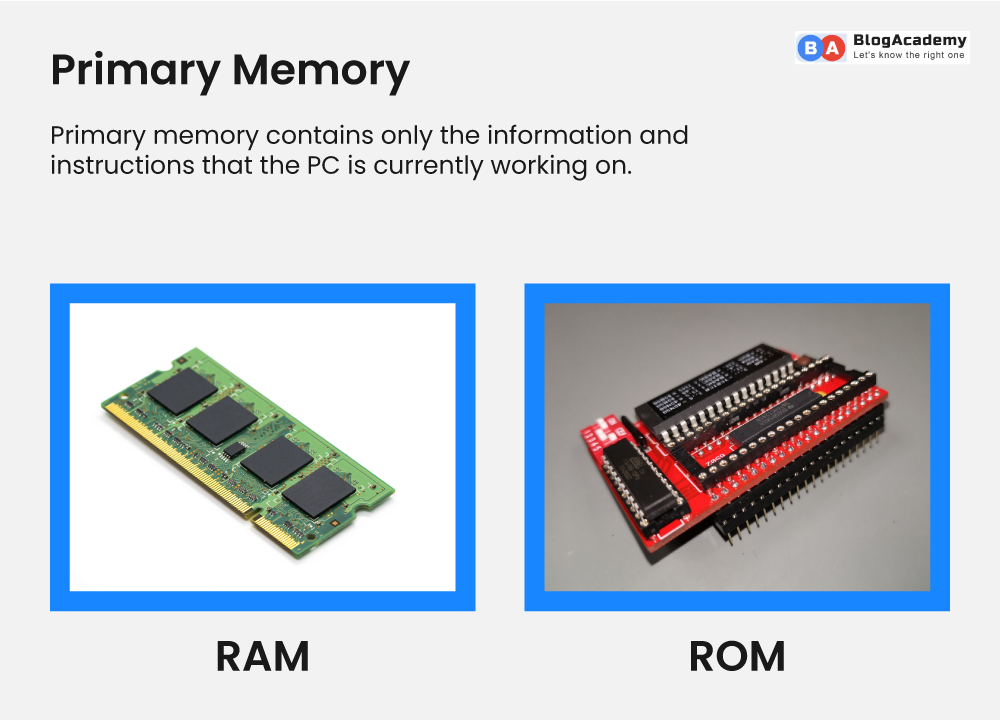
Primary memory contains only the information and instructions that the PC is currently working on. It has a limited range and information is lost when the force is turned off. It usually consists of semiconductor gadgets. These recoveries are not as fast as articles.
The guidelines and basics needed to prepare information to live in memory. It is separated into two subcategories.
- RAM
- ROM
RAM ( Random Access Memory)
A form of computer data storage that currently stores data and machine code. This allows device data items to be read or written to almost the same extent regardless of the actual location of the data in the internal memory.
There are two types of RAM namely:
- SRAM
- DRAM
SRAM: SRAM is a flip-flop memory with a logic circuit of transistors. It can again be divided into s-r flip-flop, jk-flip-flop, D-flip-flop, t-flip-flop, etc.
DRAM: DRAM is memory made by the principle of energy storage in capacitors. They basically act as bit memories.
ROM (Read Only Memory)
Read Only Memory (ROM) is a non-volatile memory used in computers and other electronic devices. Data stored in ROM can only be changed slowly, so it is mainly used to store firmware or application software on plug-in cartridges.
Secondary memory
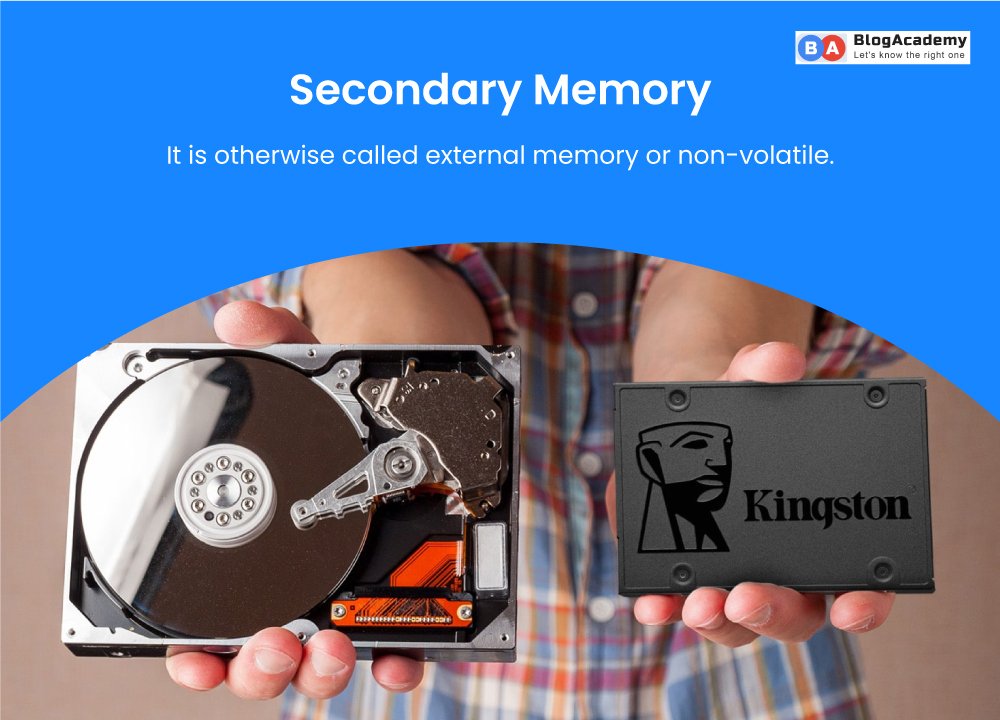
It is otherwise called external memory or non-volatile. It is slower than the original principle. They are used to discard information/data forever. The computer processor does not receive these recollections directly but rather acquires them through an information acquisition schedule. For example, discs, CD-ROMs, DVDs, and more.
Secondary memory can be further divided into two parts depending on the main computer. Namely:
- permanent
- portable
Permanent memory
Hard drives and SSD drives are included in this memory. It can be opened but it has to be connected to the computer all the time. All the files of the modern computer operating system are stored in this memory. When the computer is turned on, the necessary operating system files go from the hard drive to the main memory RAM. This is called computer booting.
Computer hard disks can be divided into two parts.
- HDD
- SSD

HDD: An HDD hard disk is called a mechanical disk. This hard disk stores data through magnetic disks. Since HDD hard disk consists of mechanical and magnetic disks, it is more likely to get lost. HDD hard disks up to 8 terabytes are currently available.
SSD: SSD is an improved version of computer memory. SSD is the full form of solid state drive, it is a flash-based technology, SSD has a much higher read-write speed than HDD.
There are many advantages of using SSD, as it works fast and the data does not get lost for a long time. All computers now use SSDs as a result of falling prices. SSD will eventually take the place of HDD hard disk.
Portable memory
It can be opened at any time even when the computer is on. This type of memory is mainly used for storing and transporting personal files. This includes any removable memory, such as a portable hard drive, pen drive, or flash drive. CDs, DVDs, Blu-rays, etc. are also included in this memory although they are labeled as ROMs.
Cache memory
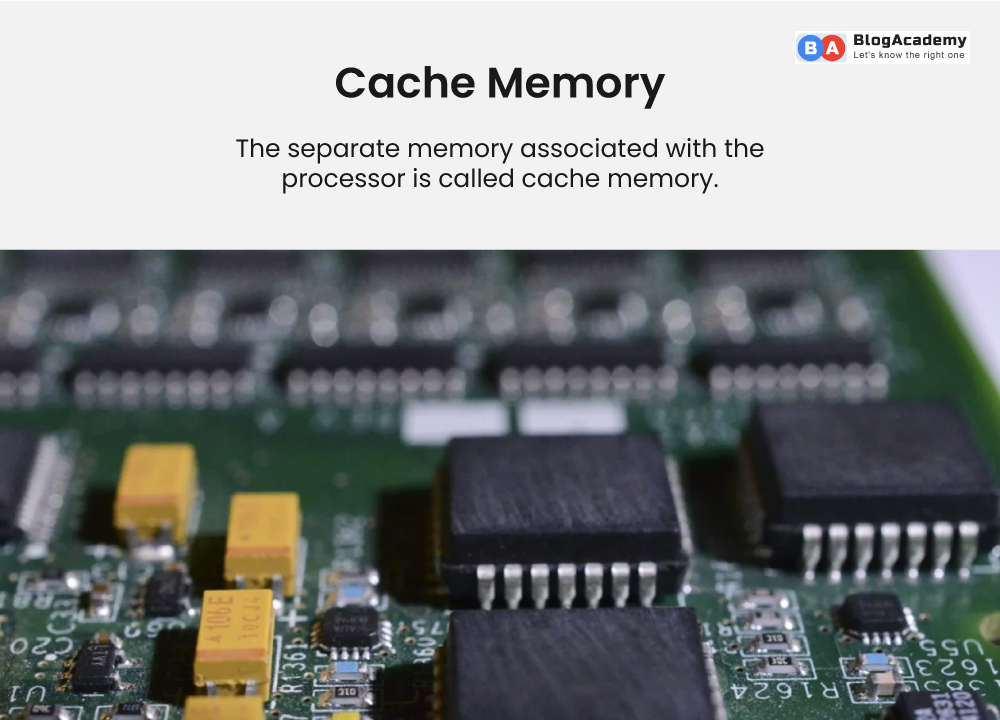
The separate memory associated with the processor is called cache memory. Cache memory is also called CPU memory. Computer speed depends on cache memory. It works much like RAM. Data is stored in cache memory when the processor performs a task. It is used to store commands and small data sent to the computer.
Cache memory is a very fast semiconductor memory that can accelerate the CPU. It acts as a buffer between CPU and policy memory. It is used to hold the data and program pieces that are frequently used by the CPU. Fragments of data structures and projects are moved from the circle by the work structure to store memory, from where the CPU can access them.
Unit of measurement of memory
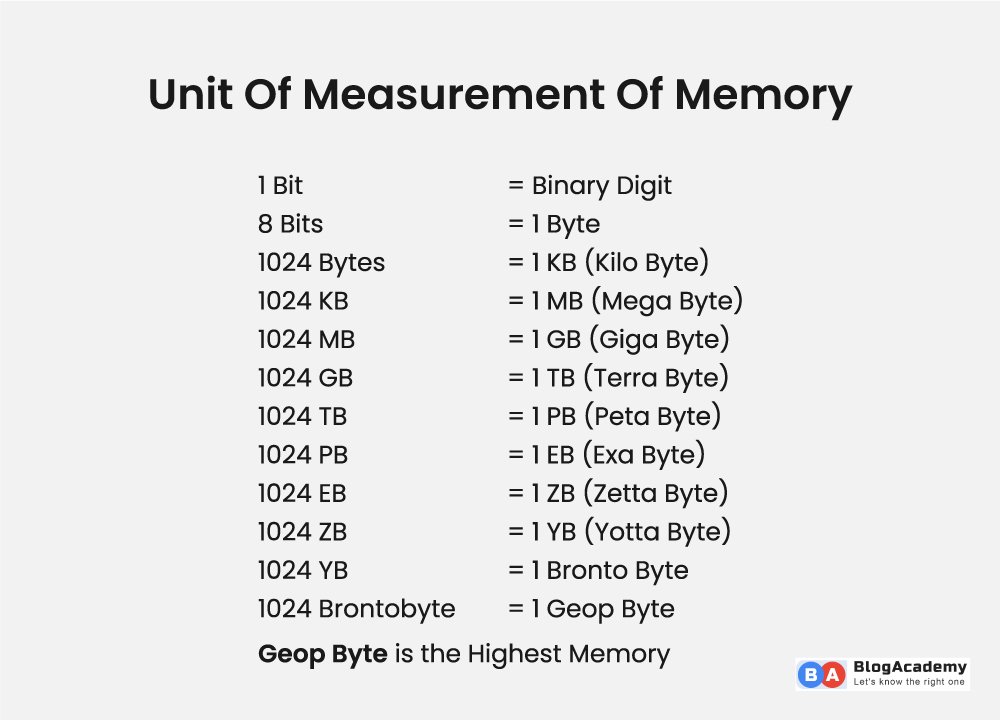
Different sizes of memory are used in computers according to the type of work. It is used in various units of measurement, such as bits, bytes, kilobytes, megabytes, gigabytes, etc. Memory capacity is the capacity to hold computer binary digits.
The smallest unit of data storage capacity is the kilobyte, expressed as kb. Current hard disk storage capacity ranges from 1024 gigabytes to terabytes. In addition, we use external memory for various purposes, such as pen drives, micro SD cards, DVD discs, etc.
Different sizes of memory are used to improve the nature and speed of computer work. which are used in different units of measurement. Eg – bit, byte, kilobyte, megabyte, gigabyte, etc.
Conclusions
There are different types of computer memory used in computers To run your computer system. Through this blog, we discuss what are computer memory and its types and example such as RAM, ROM, SSD, HDD, etc.



